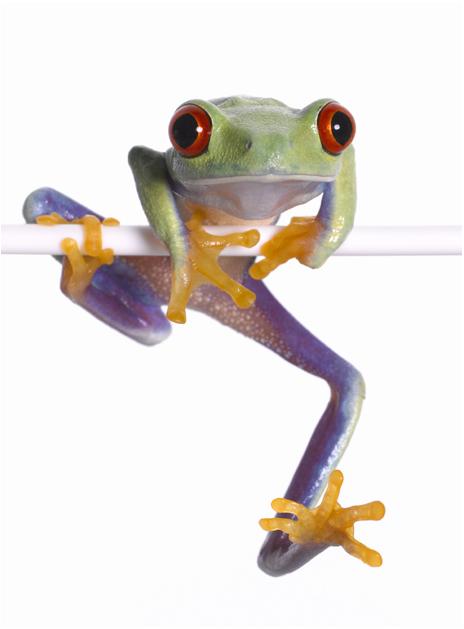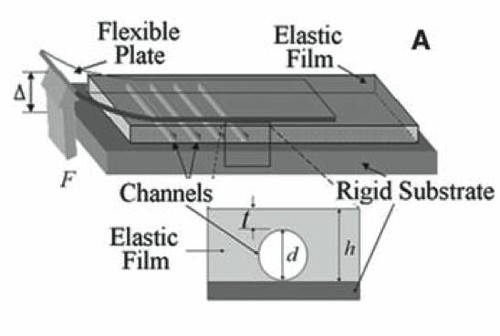Red-eyed tree frog, Agalychnis calidryas.
Red-eyed tree frogs live in Costa Rica and other Neotropical regions. Their bright red eyes presumably startle would-be predators. Their diet consists of flies and moths, and possibly includes smaller frogs and crickets. All tree frogs are classified into the families Hylidae and Rhacophoridae. Many tree frogs are green in color, while the terrestrial and aquatic species have muted coloration.
Image: Don Farral (Photodisc) via National Geographic.
Since the holidays are advancing upon us like a rampaging SUV, I thought I'd talk about an essential but overlooked tool for these and nearly all holidays: tape. We use tape for all sorts of things, especially for wrapping gifts, but we rarely give it any thought, unless we are opening our gifts for a quick peek before the holidays. However, some scientists have thought about it -- perhaps they also open their gifts early? Inspired by wall-climbing frogs, lizards, spiders and insects, a group of scientists have developed a new superadhesive tape that can actually be reused.
Basically, the reason that conventional tape cannot be reused is because the adhesive forms permanent cracks when peeled from a surface. While these tiny cracks allow tape to be removed, they also render it useless.
But a team of scientists, led by Abhijit Majumder at the Indian Institute of Technology in Kanpur, India, discovered that the adhesive on the toe pads of tree frogs and crickets contain microscopic channels that prevent cracking when they are peeled from a surface. So they placed a layer of microchannels beneath an adhesive layer, and this prevented cracks from forming in the adhesive (see below);
Further, by adding liquid to these microchannels, the team found they could increase the strength of the adhesive by 30 times. Because adhesion occurs when the molecules of two surfaces are close enough together to allow intermolecular attraction to occur, adding a liquid increases the "stickiness" of the adhesive due to the effects of capillary action. Capillary action results from surface tension of a liquid, when attractive intermolecular forces between a liquid and a substance are stronger than the cohesive intermolecular forces of the liquid itself.
Thus, the microchanneled adhesive pulls tighter to the surface to which it is attached, increasing its stickiness. And since the adhesive itself is elastic, it is also reusable.
Besides taking advantage of this adhesive to peek at your gifts early, scientists have proposed many other uses for it.
"For example, the tape could be used to help baseball and cricket players keep their gloves on, or to keep price tags on supermarket goods. Another potential use is for the feet of wall-climbing robots," said study co-author Animangsu Ghatak.
This is a hot field of scientific research, known as "biomimetics", where investigators look to nature for ideas and then develop them for practical applications.
This study was published in a recent issue of Science magazine.
Sources
Abhijit Majumder, Animangsu Ghatak, and Ashutosh Sharma. Microfluidic Adhesion Induced by Subsurface Microstructures. Science (12 October 2007) 318:258-261 | DOI: 10.1126/science.1145839 [PDF].
YahooNews (quote)
Also;
B N J Persson. Wet adhesion with application to tree frog adhesive toe pads and tires. (2007) Journal of Physics: Condensed Matter 19:376110-379126 | doi:10.1088/0953-8984/19/37/376110 [PDF]


